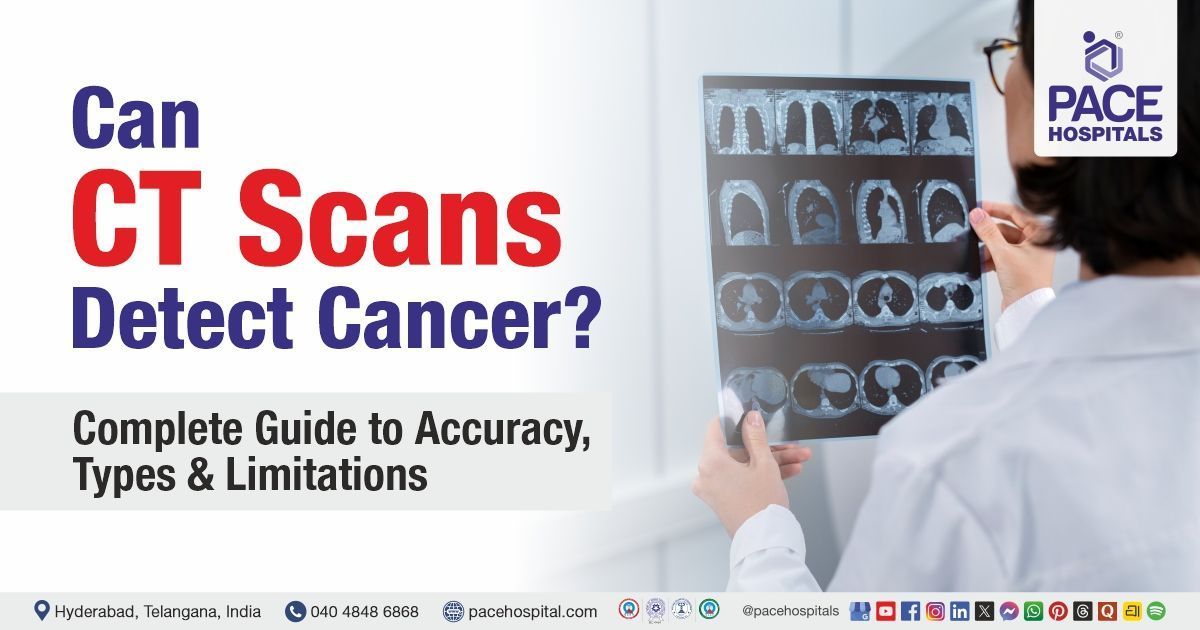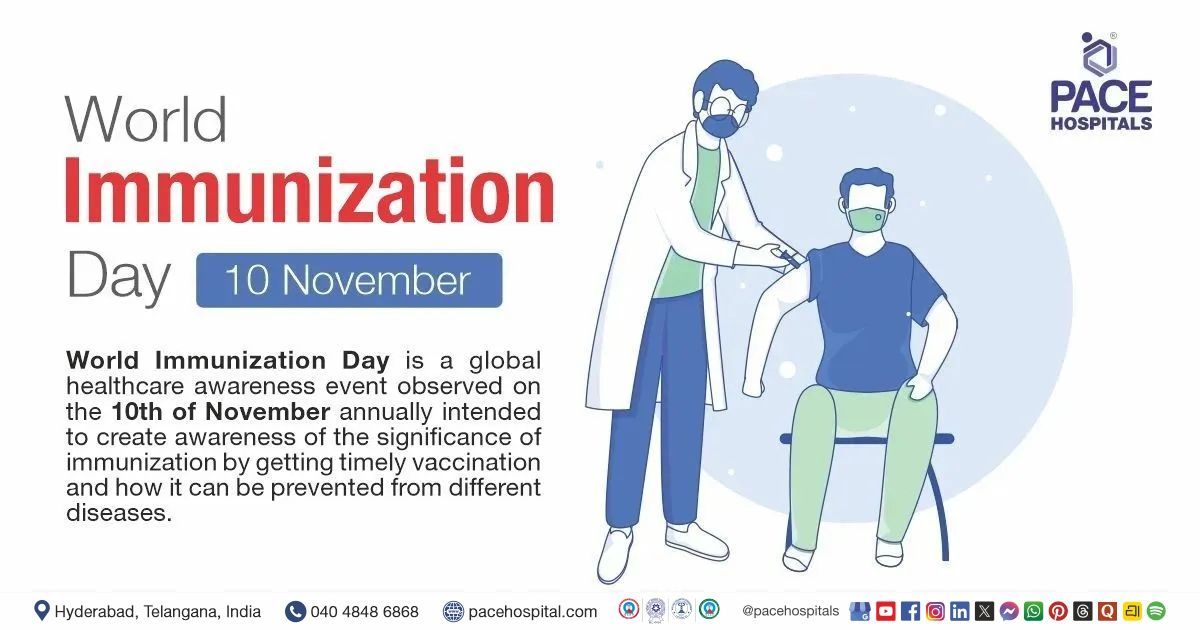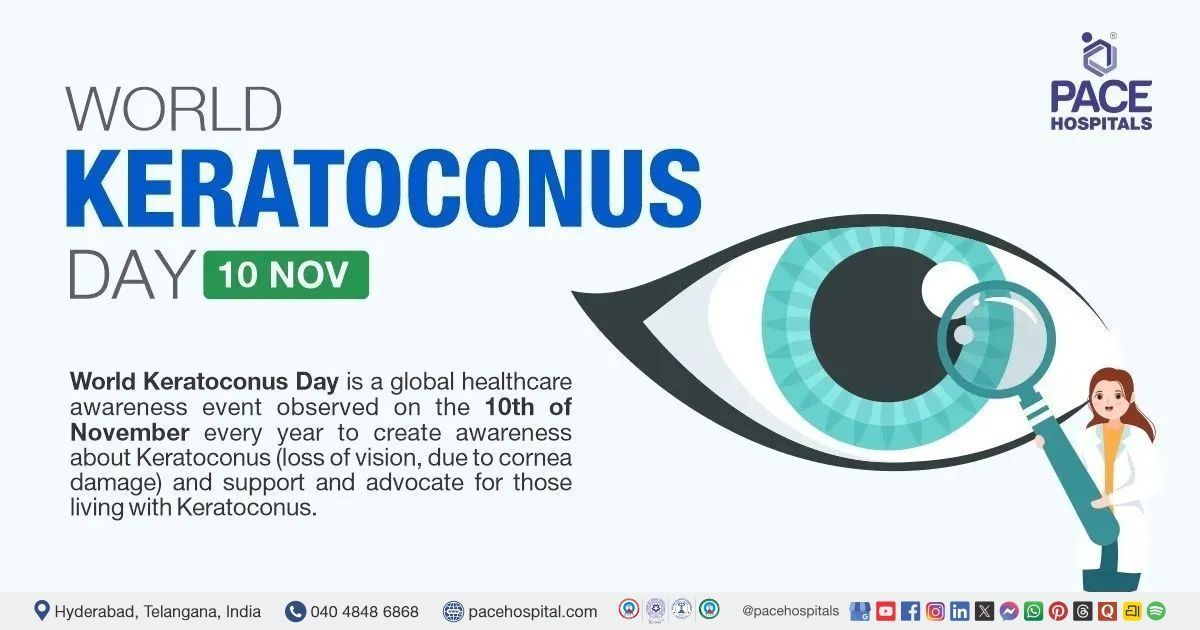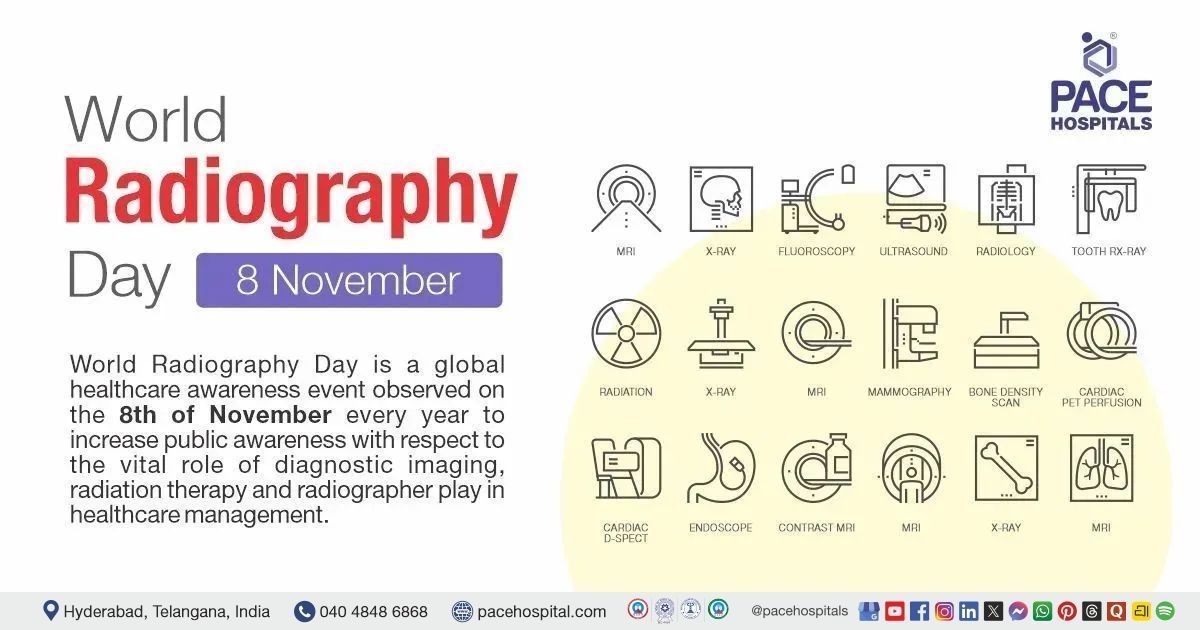Can a CT Scan Detect Cancer? Types, Accuracy & What to Expect
PACE Hospitals
Written by: Editorial Team
Medically reviewed by: Dr. Navya Manasa Vuriti - Medical Oncologist, Hemato Oncology and Bone Marrow Transplant Specialist & IAPC Certified Palliative Care Specialist
Introduction
For anyone facing unexplained symptoms or undergoing routine health screening, one of the most common questions is: Can a CT scan really detect cancer?
The quick answer is yes — a CT (Computed Tomography) scan can detect many types of cancers with high accuracy, but interpretation always depends on the tumor’s location, size, and characteristics.
CT imaging plays a crucial role in modern oncology — from identifying suspicious growths to staging cancer and monitoring treatment response. However, it is not a stand-alone diagnostic test; results must be correlated with other imaging, laboratory tests, and often a biopsy to confirm malignancy.
This article explains in depth how CT scans detect cancer, which cancers are most accurately identified, their limitations, and what to expect before, during, and after the scan.
Medical Disclaimer: This content is for informational purposes only and should not replace professional medical consultation.
Can CT Scans Detect Cancer?
Yes, CT scans can detect many types of cancer. CT (Computed Tomography) imaging is one of the most effective tools doctors use to find, diagnose, and monitor cancer throughout the body. However, the accuracy and effectiveness depend on the cancer type, location, size, and stage.
How CT Scans Work in Cancer Detection
CT scans use X-rays combined with computer processing to create detailed cross-sectional images of the body. By rotating around the patient, the scanner captures hundreds of thin slices that are reconstructed into 3-D images — allowing radiologists to see internal organs, bones, and soft tissues with remarkable clarity.
Cancerous tissue often appears denser or differently shaped than surrounding normal healthy tissue. CT Scan can identify:
- Abnormal growth such as masses, nodules, or lesions
- Organ enlargement or structural distortion
- Lymph node swelling
- Evidence of metastasis to other organs
CT Scan with Contrast vs Without Contrast
Contrast-enhanced CT scans use an iodine-based dye injected intravenously to highlight blood vessels and improve tissue differentiation.
- With contrast: provides sharper images of soft tissues, liver, pancreas, kidneys, and blood supply to tumors.
- Without contrast: suitable for bone lesions or patients allergic to dye.
Doctors often compare both images for maximum diagnostic precision.
What Types of Cancer Can CT Scans Detect?
Cancers Most Accurately Detected
Lung Cancer
- CT is the gold standard for lung cancer screening, particularly low-dose CT (LDCT), recommended for long-term smokers or high-risk individuals.
- Detection rate: 93–97 % for nodules > 5 mm.
- Benefits: Detects early-stage cancers before symptoms occur, reducing mortality by up to 20 % (per NLST study).
- Usage: Annual LDCT screening for adults 50–80 with 20-pack-year smoking history.
Liver Cancer
- Contrast-enhanced CT can identify hepatocellular carcinoma (HCC) and metastatic lesions with 80–90 % sensitivity.
- Dynamic imaging in arterial and venous phases helps differentiate tumors from benign cysts or hemangiomas.
Kidney Cancer
- CT is the primary tool for detecting renal masses.
- Distinguishes solid vs cystic lesions.
- Provides precise tumor staging (T1–T4) and assesses invasion into renal veins or surrounding tissues.
- Accuracy exceeds 90 % for tumors > 2 cm.
Pancreatic Cancer
- Pancreatic tumors are challenging because of their deep location.
- Multiphase contrast CT detects ≈ 85 % of tumors > 2 cm.
- Essential for assessing resectability and vascular invasion.
- Thin-slice multidetector CT improves visibility of smaller lesions.
Colorectal Cancer
- CT colonography (virtual colonoscopy) visualizes polyps ≥ 6 mm with 90–95 % accuracy.
- CT also maps metastatic spread to liver or lungs.
- For screening, it's non-invasive and requires less sedation than conventional colonoscopy.
Lymphoma
- CT reveals lymph node enlargement in chest, abdomen, pelvis, or neck.
- Used for staging (Hodgkin / non-Hodgkin) and treatment monitoring.
- PET-CT often follows to evaluate metabolic activity.
Cancers with Limited Detection
- Prostate Cancer: CT has limited soft-tissue contrast; MRI or PET-CT is preferred.
- Brain Tumors: MRI gives superior soft-tissue detail and detects smaller lesions.
- Breast Cancer: Mammography remains the primary screening method;CT is used for staging or metastatic identification.
How Accurate Are CT Scans for Cancer Detection?
Accuracy Rates by Cancer Type
| Cancer Type | Approx. Sensitivity (%) | Notes |
|---|---|---|
| Lung Cancer | 93-97 | Excellent for nodules > 5 mm |
| Liver Cancer | 80-90 | Contrast essential |
| Kidney Cancer | 90+ | High staging accuracy |
| Pancreatic Cancer | 80-85 | May skip out small lesions < 1 cm |
| Colorectal Cancer | 90-95 | Detects polyps > 6 mm |
| Lymphoma | 85-95 | Node size > 1 cm criterion |
| Brain / Prostate / Breast | < 70 | MRI preferred |
Factors Affecting Accuracy
- Tumor size: Very small lesions (< 5 mm) may be missed.
- Location: Areas with overlapping structures (pancreas, bowel) reduce clarity.
- Stage: Early-stage or diffuse cancers harder to visualize.
- Image quality: Patient movement or inadequate contrast can obscure detail.
Limitations of CT Scans
- Cannot Differentiate Benign vs Malignant precisely — biopsy confirmation needed.
- False positives/negatives: Inflammatory or scar tissues may mimic tumors.
- Radiation exposure: A chest-abdomen-pelvis CT ≈ 10–30 mSv (slightly higher than X-ray).
- Contrast allergy / kidney function issues: require precaution or alternative imaging.
- Cost and availability in some settings.
When CT Results Require Further Testing
- Biopsy to confirm malignancy.
- PET-CT for metabolic evaluation.
- MRI / Ultrasound for better tissue characterization.
- Follow-up CT after 3–6 months for indeterminate nodules.
CT Scan vs Other Cancer Detection Methods
| Imaging Type | Best For | Limitations | Radiation |
|---|---|---|---|
| CT Scan | Lung, liver, kidney | Less soft-tissue detail | Yes |
| MRI Scan | Brain, prostate, soft tissue | Longer scan time, expensive | No |
| PET Scan | Metastasis, staging | Lower anatomical detail | Yes |
| Ultrasound | Breast, thyroid, liver | Operator-dependent | No |
| Mammography | Breast screening | Breast only | Yes |
When Doctors Choose CT Over Others
Doctors prefer CT scans when:
- Rapid evaluation of chest, abdomen, pelvis is required.
- Emergency situations (trauma, sudden pain).
- Surgical planning or staging known cancer.
- Whole-body assessment of metastasis.
What to Expect During a CT Scan for Cancer?
Before the Scan
- Fasting: 4–6 hours before contrast CT.
- Allergy screening: check for iodine / shellfish allergies.
- Kidney function test (Creatinine): may be required.
- Remove metal objects: jewelry, dentures, etc.
- Medication advice: some drugs paused before scan (e.g., Metformin).
During the Scan
- Duration ≈ 10–30 minutes.
- Patient lies on a motorized table moving through the circular scanner.
- Technologist gives breath-hold instructions for motion-free images.
- For contrast CT, a brief warm flush sensation may occur after dye injection.
- Scan is painless and non-invasive.
After the Scan
- Resume normal diet unless instructed otherwise.
- Hydrate well to flush contrast from kidneys.
- Results typically available within 24–48 hours.
- Your doctor may call for follow-up consultation to discuss findings.
Interpreting CT Scan Results
What Radiologists Look For
- Size, shape, and density of masses or nodules.
- Organ involvement and structural distortion.
- Lymph node enlargement.
- Signs of metastasis — lesions in liver, lung, bone, or brain.
What Abnormal Results Mean
- Not all abnormalities signify cancer.
- Benign cysts, infections, fibrosis, or inflammation can appear similar.
- Hence, doctors recommend biopsy or further imaging before confirming malignancy.
Expert Opinion on CT Scans and Cancer Detection
Dr. Lakshmi Kumar Chalamarla, Senior Interventional Radiologist – PACE Hospitals:
"Modern multi-slice CT scanners provide unparalleled clarity, realistic view, and speed. They help us map even subtle changes in organ structure, which is important for early cancer detection. Yet, correlation with clinical findings and pathology remains essential."
Dr. Navya Manasa Vuriti, Consultant Medical Oncologist – PACE Hospitals:
"CT scans are often the first step in detecting and staging cancer. However, we rely on a combination of tests — biopsy, MRI, and PET-CT — to build a complete diagnostic picture and plan personalized treatment."
Latest Advances:
- Low-dose protocols minimize radiation.
- Dual-energy CT distinguishes tissue composition better.
- AI-assisted CT interpretation enhances detection of subtle lesions.
When Should You Get a CT Scan for Cancer?
Screening Recommendations
- Lung cancer: Annual LDCT for adults 50–80 with 20 pack-year smoking history.
- Liver cancer: For hepatitis B/C carriers or cirrhotics every 6–12 months (alternating with ultrasound).
- Colon cancer: CT colonography every 5 years for average-risk individuals.
Those with strong family history or occupational exposures should consult a doctor about personalized screening intervals.
Diagnostic Situations
- Persistent unexplained pain, weight loss, bleeding, or lump.
- Monitoring post-treatment or recurrence evaluation.
- Cancer staging and treatment response assessment.
Frequently Asked Questions About CT Scans and Cancer
Is it safe to have multiple CT scans?
Yes, multiple CT scans are safe when medically necessary. Modern scanners use minimal radiation, and the benefits of accurate diagnosis far outweigh the small risk. The healthcare team orders CT scans only when the information gained will meaningfully guide treatment.
Can a CT scan detect cancer in early stages?
Yes, especially for lung, colon, liver, and kidney cancers, provided tumors are > 5 mm and high-resolution scanners are used.
How small of a tumor can a CT scan detect?
Typically 5–10 mm; very small (< 3 mm) lesions may be missed or appear indeterminate.
Can CT scan detect cancer anywhere in the body?
Whole-body CT can survey head-to-pelvis, but sensitivity varies by organ type and contrast usage.
Is CT scan or MRI better for cancer detection?
MRI is superior for soft tissue (brain, prostate, uterus), CT for lung and abdominal organs.
Can CT scan tell if a tumor is benign or malignant?
CT suggests malignancy by shape, density, and invasion, but only a biopsy confirms it.
How often should high-risk individuals get CT scans?
Annual LDCT for lung cancer is recommended; others depend on risk factors and doctor's advice.
Do I need contrast dye for cancer detection?
In most cases yes — contrast enhances visibility of tumors and blood supply.
Can CT scan detect cancer recurrence?
Yes; periodic CTs monitor treated patients for relapse or new growths.
Can abdominal CT detect all cancers in the abdomen?
It covers liver, pancreas, kidneys, spleen, bowel, lymph nodes — but may miss small lesions in stomach or ovaries.
What are the radiation risks of CT scans?
A single CT adds a very low cancer risk (≈ 1 in 2,000); benefits usually outweigh the risk.
Will insurance cover CT scans for cancer screening?
Most policies cover CT when medically indicated; screening coverage depends on risk criteria.
How long does it take to get results?
Usually within 24–48 hours; urgent cases can be reported within a few hours.
Can CT scan detect cancer spread (metastasis)?
Yes, especially to lungs, liver, and bones — vital for staging and treatment planning.
Can chest CT detect lung cancer without symptoms?
Yes, low-dose screening targets asymptomatic high-risk people.
What’s the difference between diagnostic and screening CT?
Screening CT looks for disease before symptoms; diagnostic CT investigates known problems.
Are there alternatives to CT if I’m concerned about radiation?
MRI and ultrasound are radiation-free alternatives for many organs.
Can CT scan show cancer in lymph nodes?
Yes; nodes > 1 cm or with irregular enhancement suggest involvement.
What if my CT scan shows a suspicious mass?
Doctor will recommend biopsy, PET-CT, or MRI to confirm and stage the lesion.
Can CT scan differentiate between scar tissue and cancer?
Sometimes difficult — PET-CT or MRI helps distinguish metabolic activity vs fibrosis.
How accurate is CT for pancreatic cancer detection?
Approximately 85 % for tumors > 2 cm with contrast-enhanced protocols; multiphase scans improve accuracy.
Share on
Request an appointment
Fill in the appointment form or call us instantly to book a confirmed appointment with our super specialist at 04048486868











